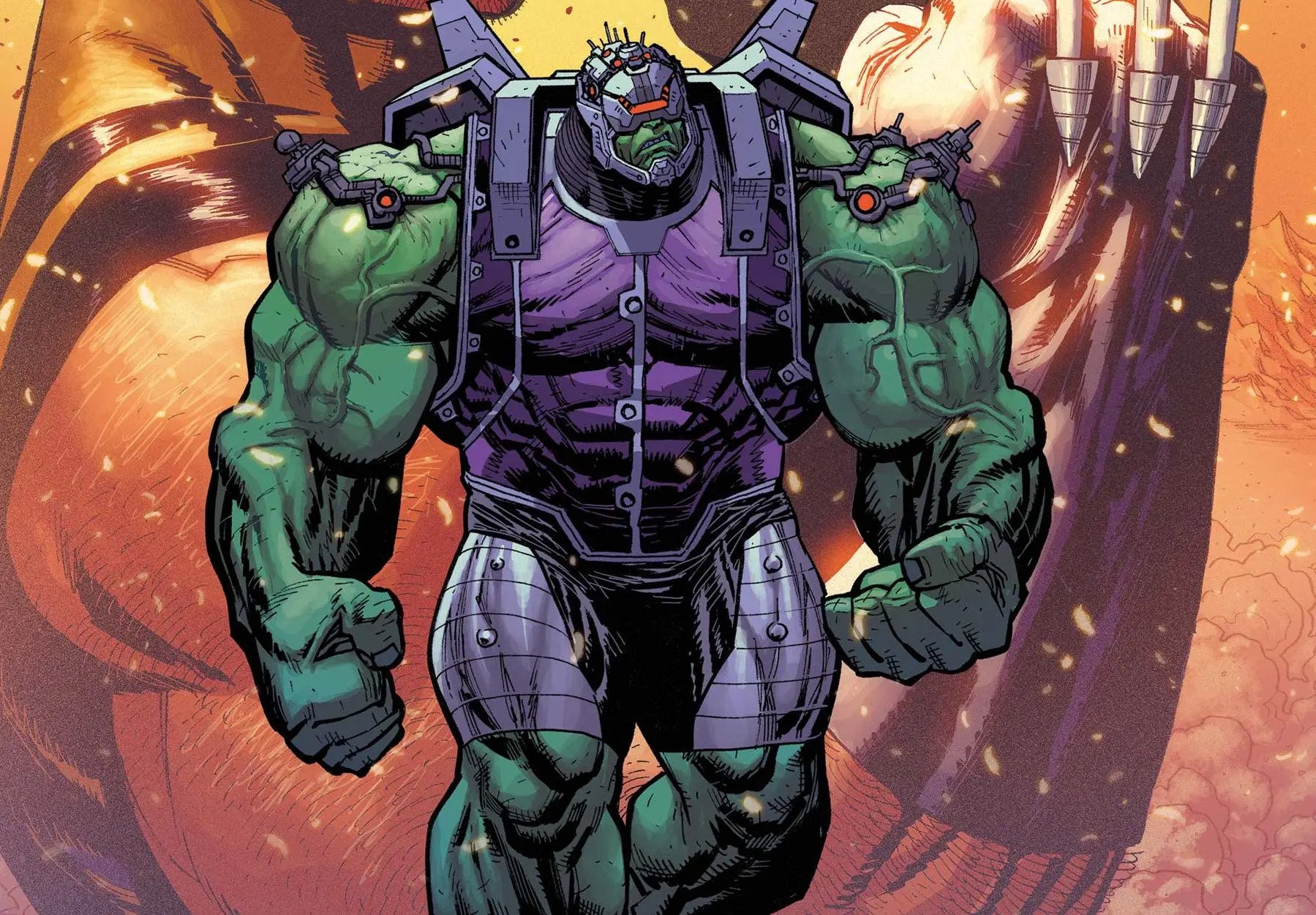Table of Contents Show
Having set up a new status quo for their main character, the creative team of Hulk sets out to deepen the volume’s central mystery thus far. In Hulk #3 (2022), Donny Cates (writer), Ryan Ottley (penciler), Cliff Rathburn (inker), Frank Martin and Federico Blee (colorists), VC’s Cory Petit (letterer), and Wilson Moss (editor) introduce the alternate dimension where the rest of their initial storyline takes place.
A World Gone Wrong In Hulk #3
We begin with a dream sequence on Banner’s part where he finds himself back at the site of Immortal Hulk‘s final battle, having been “let back into his body” after the Hulk’s rage subsided. He rises from the ground, then is attacked by a monstrosity that resembles a dark grey-hued version of the Hulk before waking up to find the alternate version of himself from the end of the last issue standing over him, urging him to calm down.
Starship Hulk pins the alternate Banner to the wall, demanding that he “start talking.” Just as this altercation happens, Starship Hulk’s computer informs “our” Bruce Banner that his creation’s engines are in danger of overheating due to the excess of energy generated by the original Hulk’s battle with the illusory “Giant-Sized” Wolverine. Banner pulls a lever in his control panel, dismissing the illusion and keeping his creation operational.
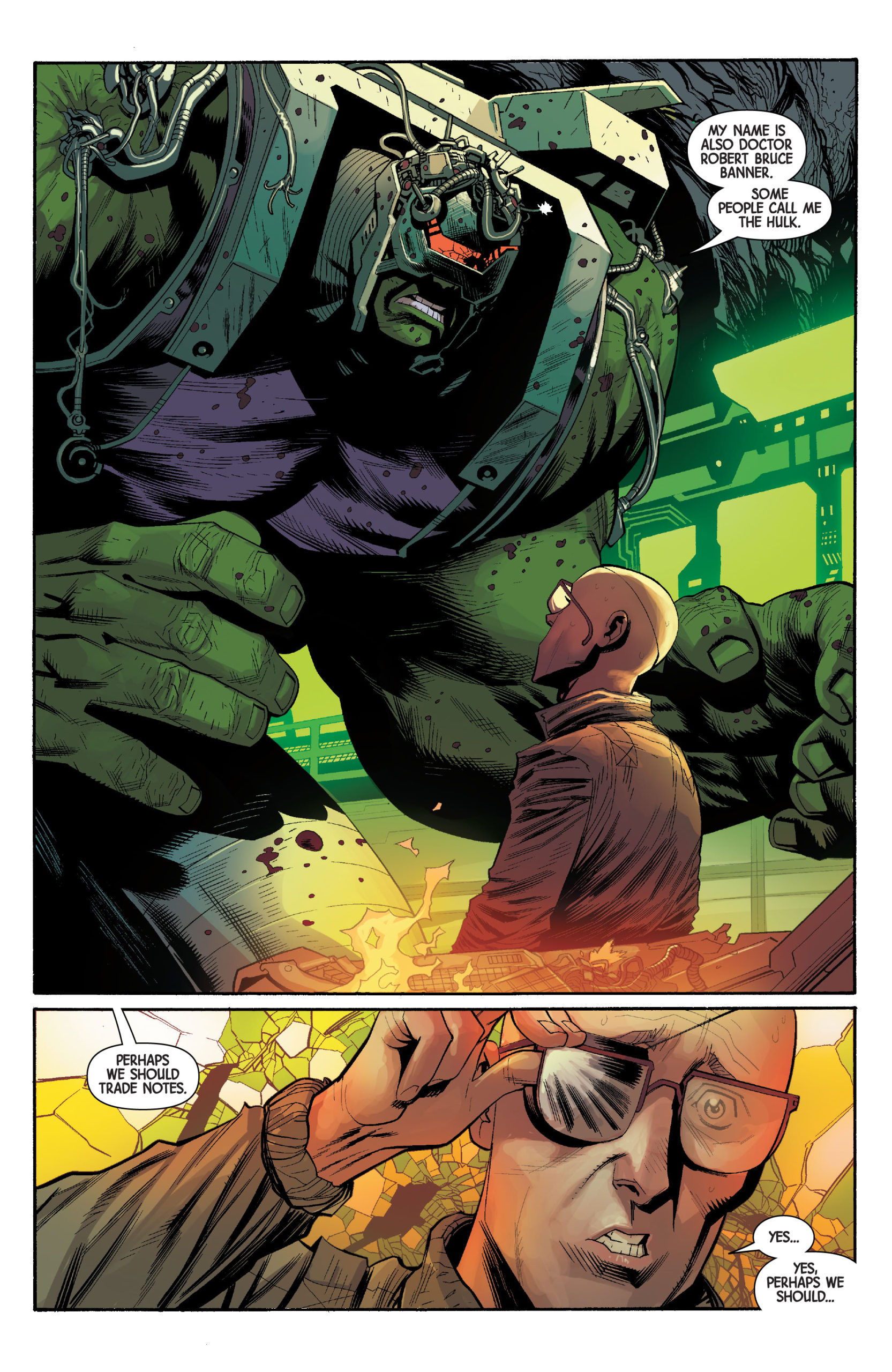
However, as the false X-Man disappears, another entity rises up in his place — the same grey-hued Hulk from Banner’s dream. The original Hulk leaps towards his doppelgänger, but the creature vanishes just as quickly as it appeared. We then cut to the two Bruce Banners “trading notes.” Starship Hulk tells his counterpart about his origin of having been mutated into what he is by a gamma bomb, then asks the other Banner if he brought him through the “sub-dimensional rift” in order to find a cure for his gamma mutation.
The scientist responds that he himself is not a Hulk. On his world, the gamma bomb experiment was a success, and thus he was never exposed to the gamma rays that would have caused him to mutate into the Hulk. Instead, he became something “much worse… death, destroyer of worlds.” (This phrase was used by J. Robert Oppenheimer, the “father of the atomic bomb,” after the first detonation of an atomic bomb — a historical reference on Cates’s part.) Although Banner intended it to “provide an endless amount of free power,” the perfected gamma technology was used by the United States of his dimension to build “the greatest empire in history.” Not only that, but gamma creatures termed “Abominations” by the government began to appear in the areas where gamma bombs were used.
Starship Hulk demands to know where the Abominations are, and when the alternate Banner explains that they were launched into “the void between dimensions” that he pulled Starship Hulk out of, he accuses his extradimensional counterpart of just “throwing them away,” rushing forward and picking him up by the scruff of his coat. Afraid for his life, the variant stammers that he wants to help the Abominations, but he was forced to get rid of them by his father-in-law, original Hulk antagonist “Thunderbolt” Ross, who in his world has secured the office of President of the United States!
Exposition/Explanations
Donny Cates has clearly set up Hulk #3 as the “expository issue,” the chapter of the storyline where its main concepts are introduced to the reader, so they can understand the rest of the story. Exposition in a superhero story is generally a very difficult thing to write without boring the reader with a string of fantasy/sci-fi terminology or stopping the flow of the book completely in order to make sure the readers understand what they need to. Cates has definitely succeeded in avoiding the former, but it is arguable whether or not he’s avoided the latter.
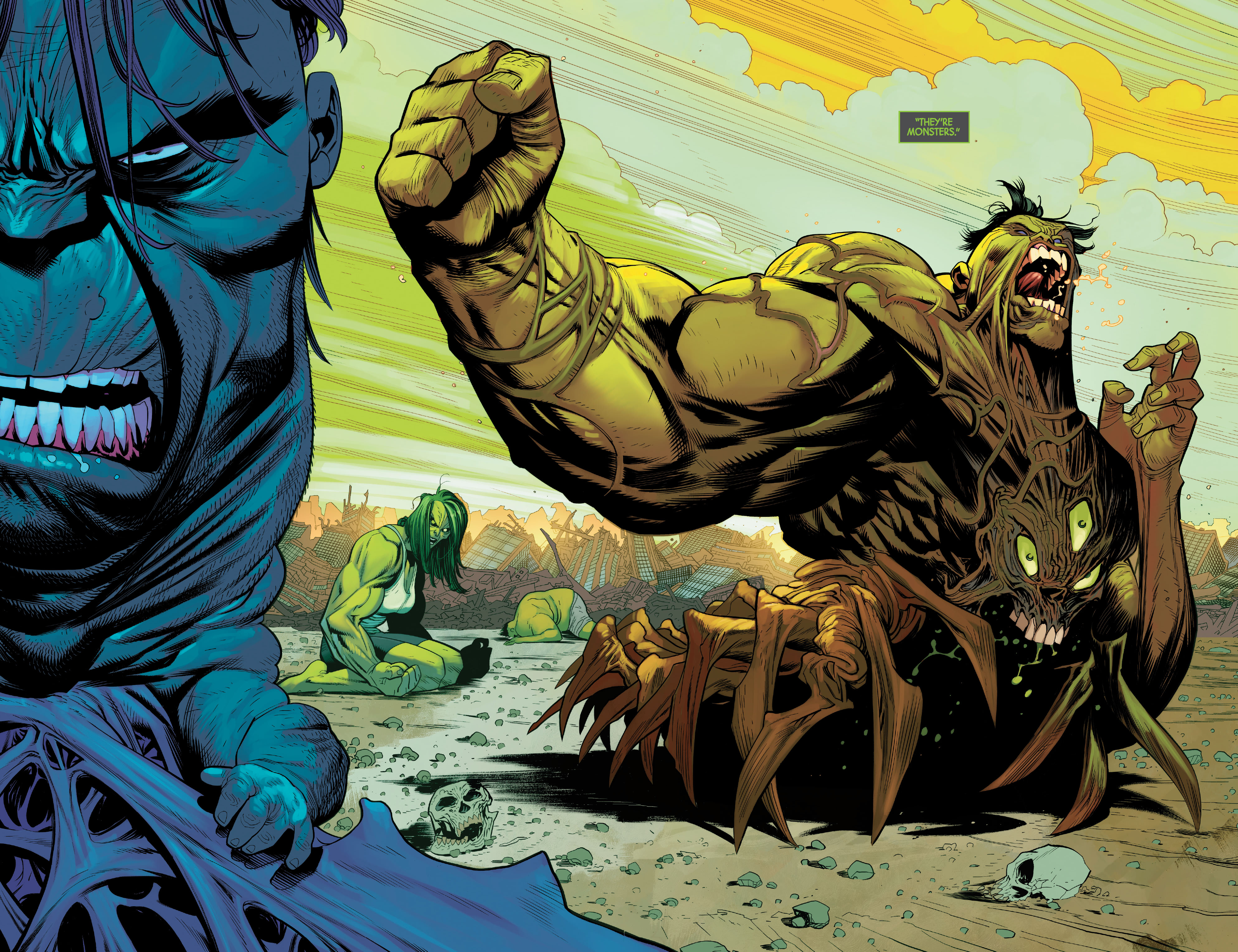
The entirety of the issue is spent on explaining the alternate dimension Starship Hulk finds himself in and introducing the concept of the grey-hued Hulk doppelganger. Depending on the point of view one takes, this could be lauded because the exposition is being taken out of the way so the story can continue uninterrupted or derided because the story completely stops for a long-winded expository scene, breaking its flow. As far as the content of said exposition is concerned, it is intriguing. The idea of a world where Bruce Banner did not become the Hulk and that of a world where Hulk-like entities are commonplace has been used in Hulk storylines before, but the combination of the two is what lends this newest story its uniqueness.
The themes of the dangers of nuclear power– as embodied by the alternate Banner’s gamma technology being used for war and made obvious by the use of the Oppenheimer quote– and governmental corruption as represented by the tyrannical alternate “Thunderbolt” Ross that Cates uses here are straight out of the 1960s Incredible Hulk books. This is another way he continues to use the book’s history as a valuable tool to craft his initial Hulk storyline. The clear setup of the Banner variant as an Oppenheimer stand-in is a great contrast to the main universe’s Banner having stopped the widespread use of gamma rays since it became known that they mutated him into the Hulk. Ross has also been the heroic Red Hulk for multiple years now in the main universe, so using a variant of him in his traditional “corrupt government official” role is another example of Cates going “back to basics.”
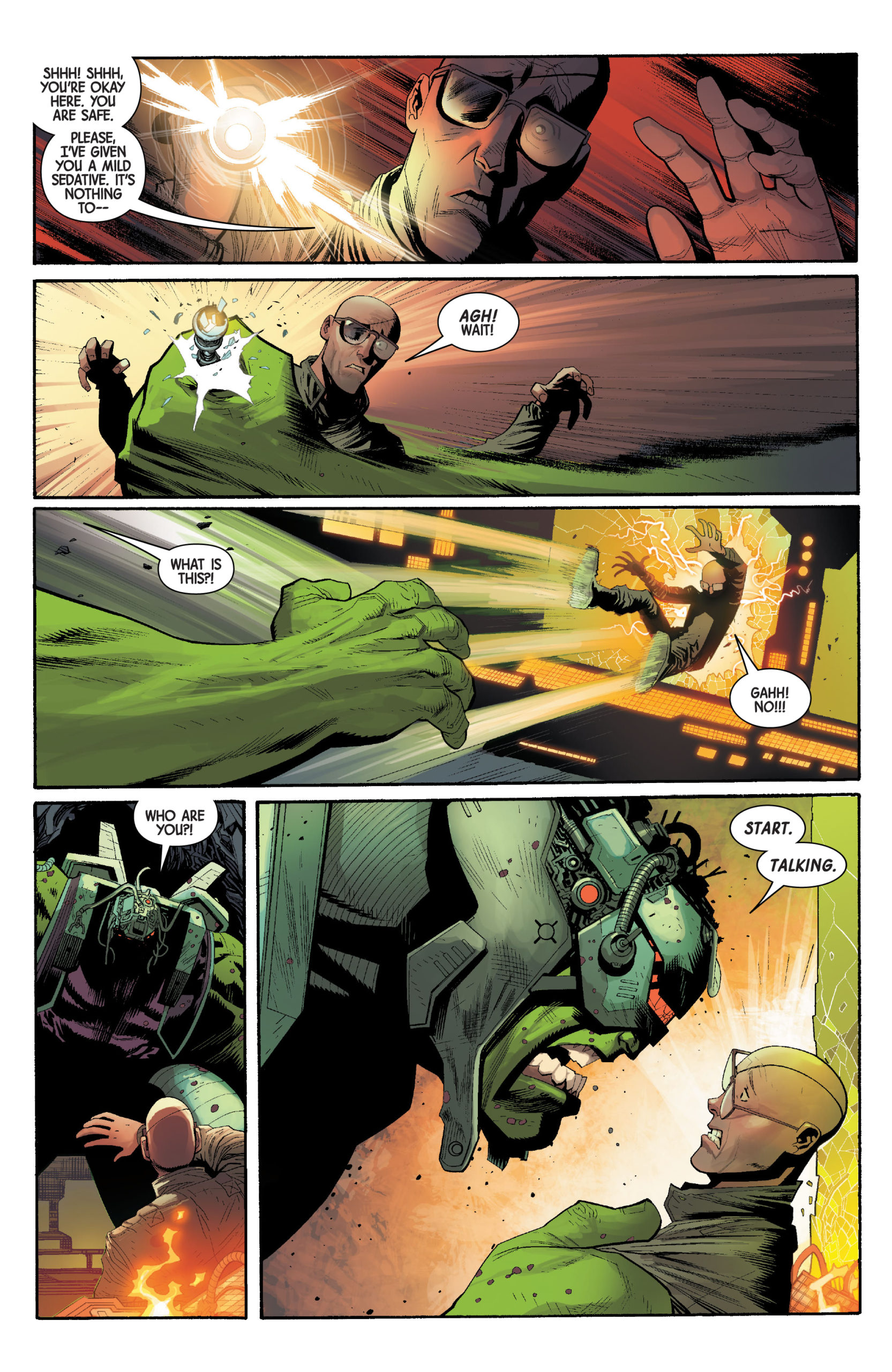
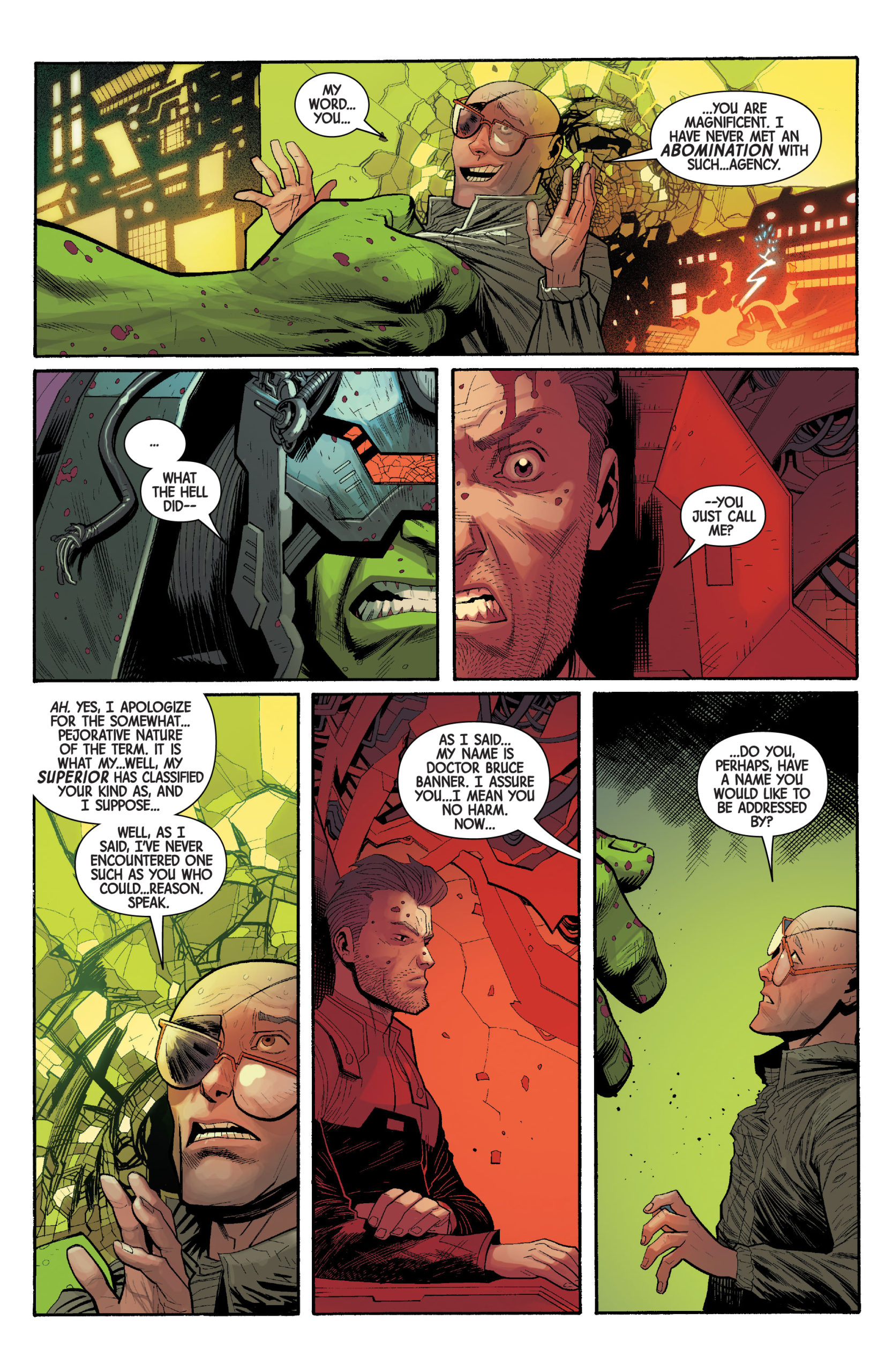
Despite the focus on the alternate dimension, Cates doesn’t forget about his initial theme of “what if the Hulk exists to protect us from Banner,” as stated in the opening to his first issue — the alternate Banner isn’t the Hulk, and he is certainly the cause of untold destruction, even if he didn’t mean to be. There’s also the matter of the Hulk doppelganger, who is suggested to be the driving force behind “our” Banner’s change in personality. It’s interesting to note that this creature appears to both the original Hulk and Bruce Banner. The significance behind this will likely be revealed in future issues of the book.
Exciting Energy Through Camera Angles
As difficult as an expository issue is to write, it’s even more difficult to illustrate. Penciller Ryan Ottley and inker Cliff Rathburn expertly use camera angles and staging to make what would otherwise just be a “talking heads issue” interesting to look at. Ottley still gets to stretch his creature design muscles in this issue with the Abominations and the Hulk doppelganger, though, so it isn’t completely talking heads.
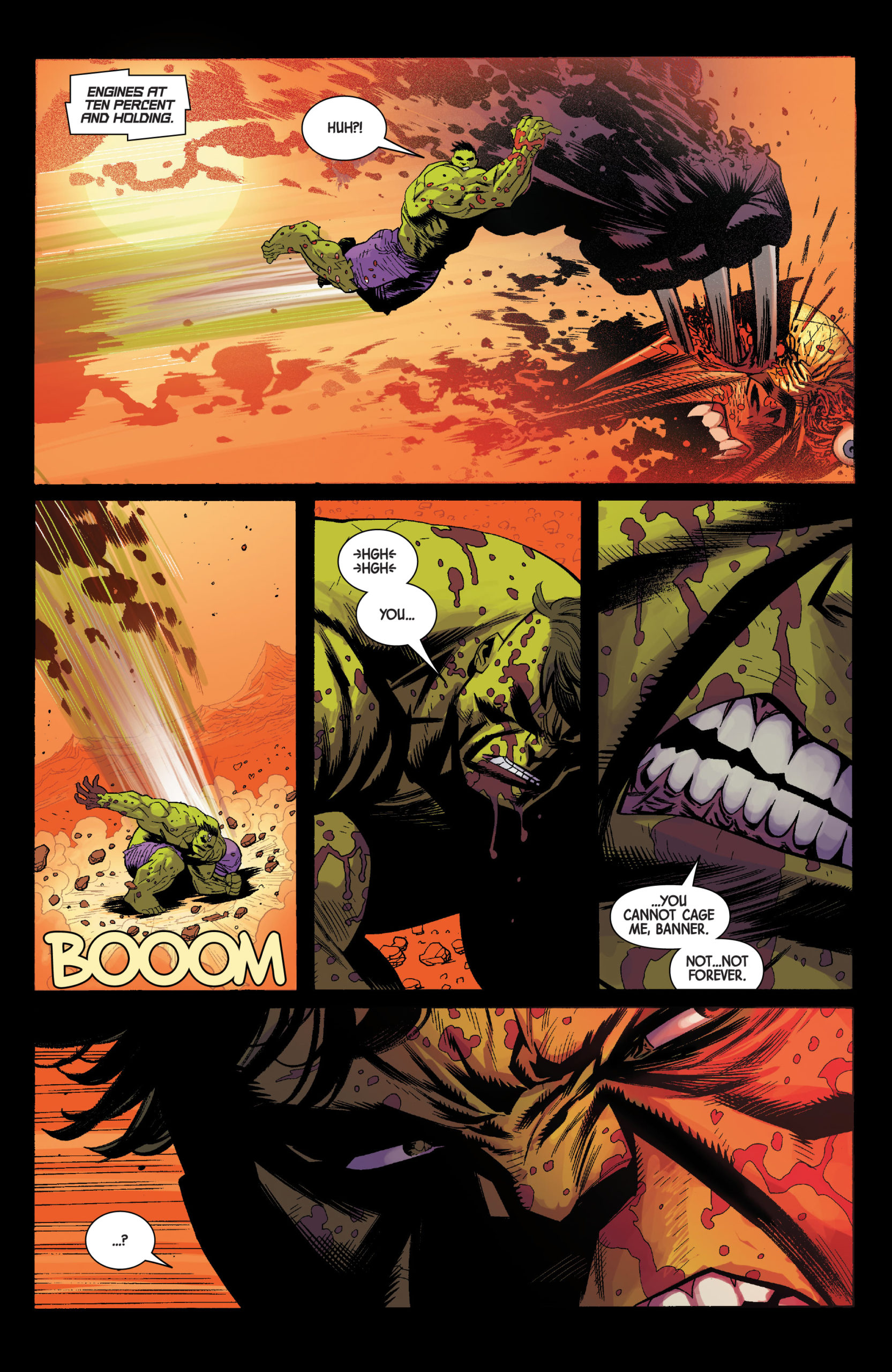
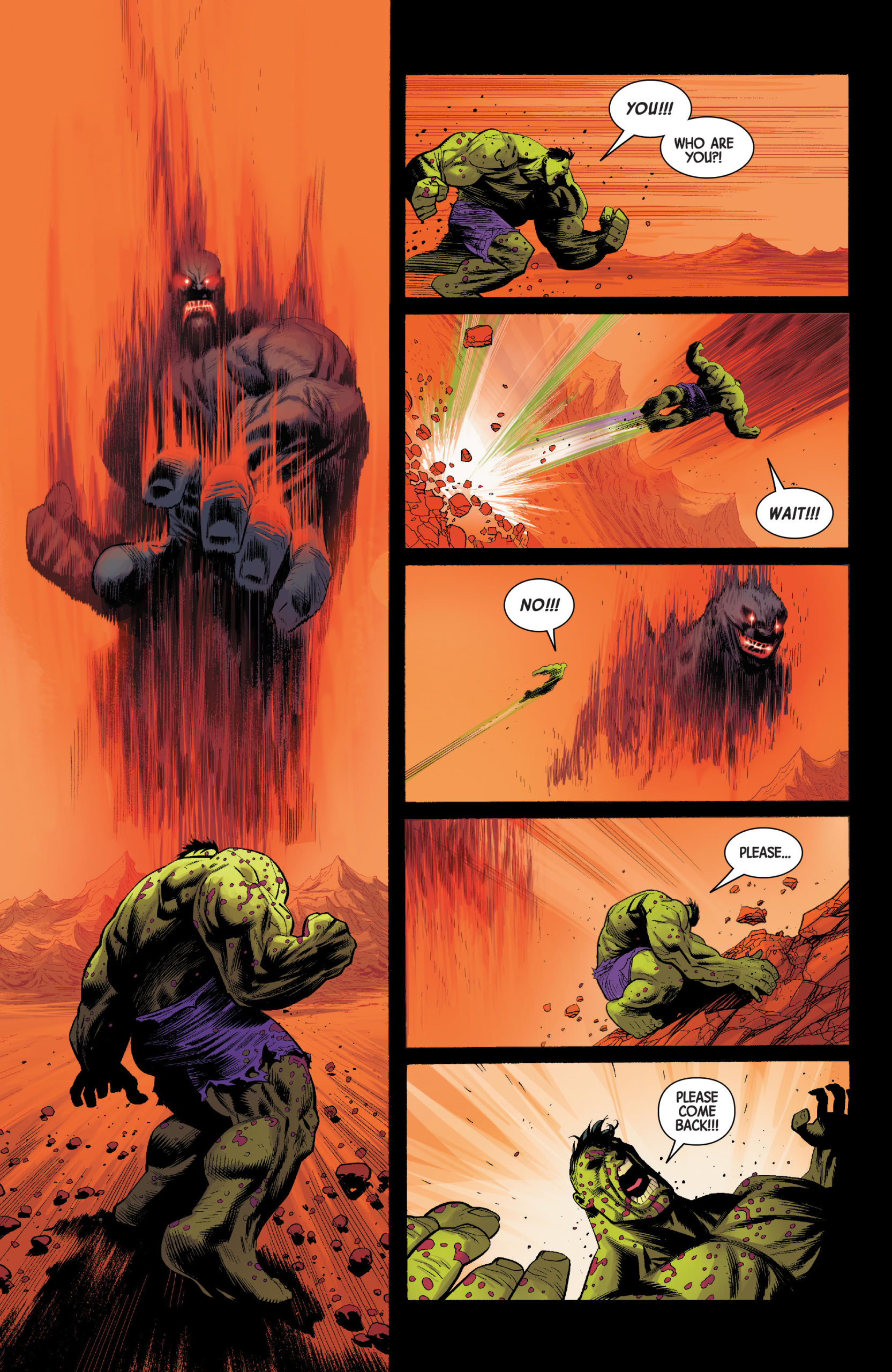
Colorists Frank Martin and Federico Blee also deserve a great deal of credit for this issue’s visuals. The contrast between the red-hued environment of “our” Banner’s mindscape and the dark catacombs of the alternate Banner’s lab, lit only by computer screens that glow a bright green, lend Hulk #3 much of its visual appeal.
Hulk #3
Although Hulk #3 is strictly exposition, the combination of good art and a stellar storyline keeps its readers engaged.
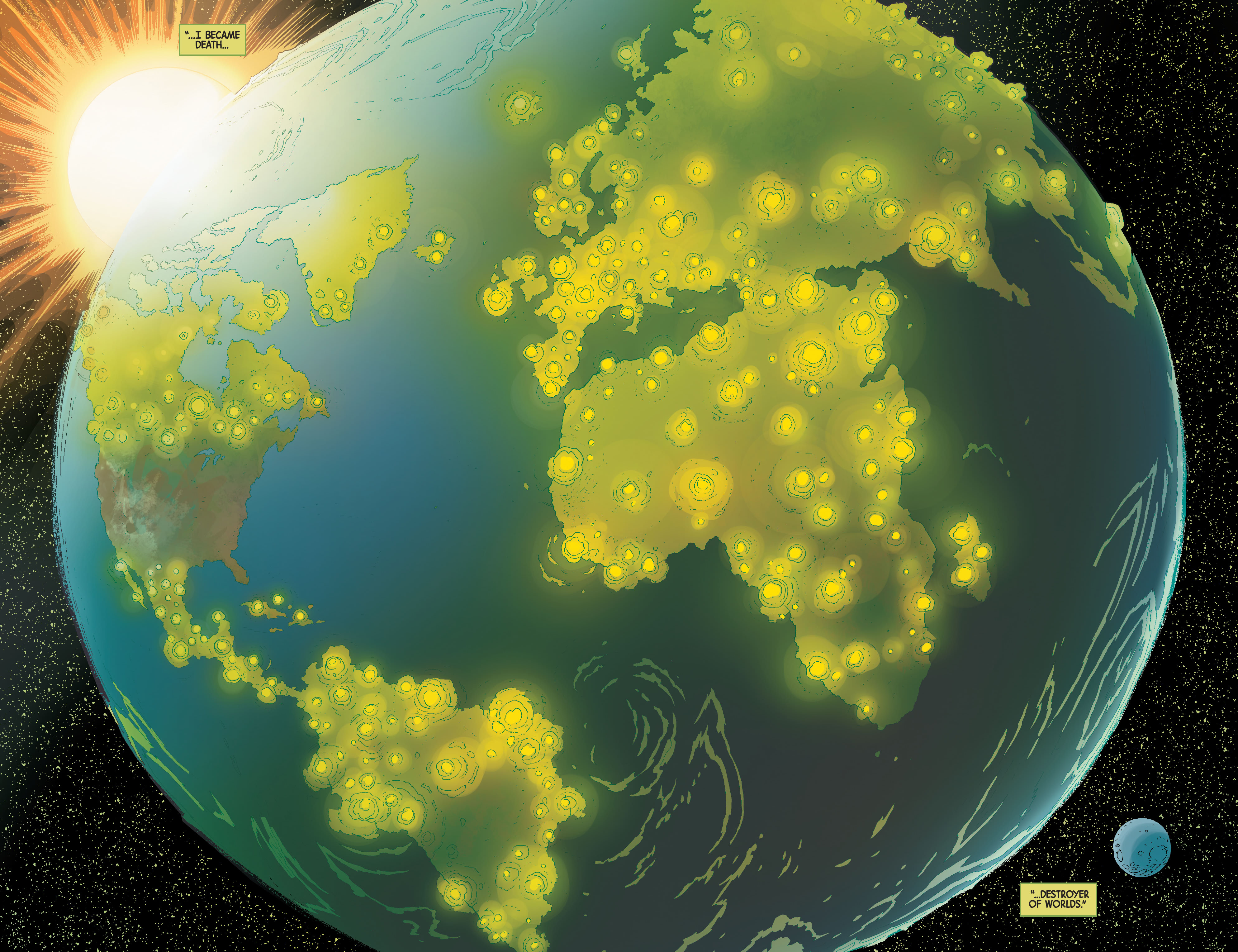
It does suffer a bit from the amount of information it needs to deliver, but this issue is much more apparent to those who choose to read the series as it releases than those who binge-read it or read it via trade paperbacks. To them, the presence of a chapter following it will diminish the feeling of this being just exposition.
